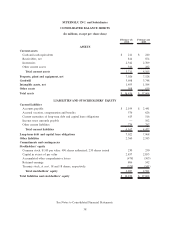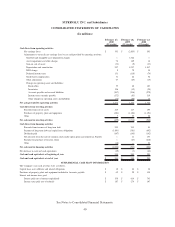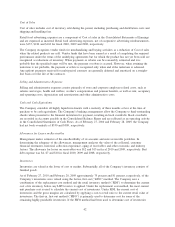Albertsons 2010 Annual Report Download - page 54
Download and view the complete annual report
Please find page 54 of the 2010 Albertsons annual report below. You can navigate through the pages in the report by either clicking on the pages listed below, or by using the keyword search tool below to find specific information within the annual report.NOTE 5—FAIR VALUE MEASUREMENTS
Fair value is defined as the price that would be received to sell an asset or paid to transfer a liability in an
orderly transaction between market participants at the measurement date. Assets and liabilities recorded at fair
value are categorized using defined hierarchical levels directly related to the amount of subjectivity associated
with the inputs to fair value measurements, as follows:
Level 1—Quoted prices in active markets for identical assets or liabilities;
Level 2—Inputs other than quoted prices included within Level 1 that are either directly or indirectly
observable;
Level 3—Unobservable inputs in which little or no market activity exists, requiring an entity to
develop its own assumptions that market participants would use to value the asset or
liability.
Impairment charges recorded during fiscal 2010 discussed in Note 2—Goodwill and Intangible Assets and
Note 3—Reserves for Closed Properties and Property, Plant and Equipment-Related Impairment Charges were
measured at fair value using Level 3 inputs.
Financial Instruments
For certain of the Company’s financial instruments, including cash and cash equivalents, receivables and
accounts payable, the fair values approximate book values due to their short maturities.
The estimated fair value of notes receivable was less than the book value by approximately $1 as of
February 27, 2010. The estimated fair value of notes receivable was less than book value by approximately $8
as of February 28, 2009. Notes receivable are valued based on a discounted cash flow approach applying a
rate that is comparable to publicly traded instruments of similar credit quality.
The estimated fair value of the Company’s long-term debt (including current maturities) was less than the
book value by approximately $54 and $452 as of February 27, 2010 and February 28, 2009, respectively. The
estimated fair value was based on market quotes, where available, or market values for similar instruments.
48
























